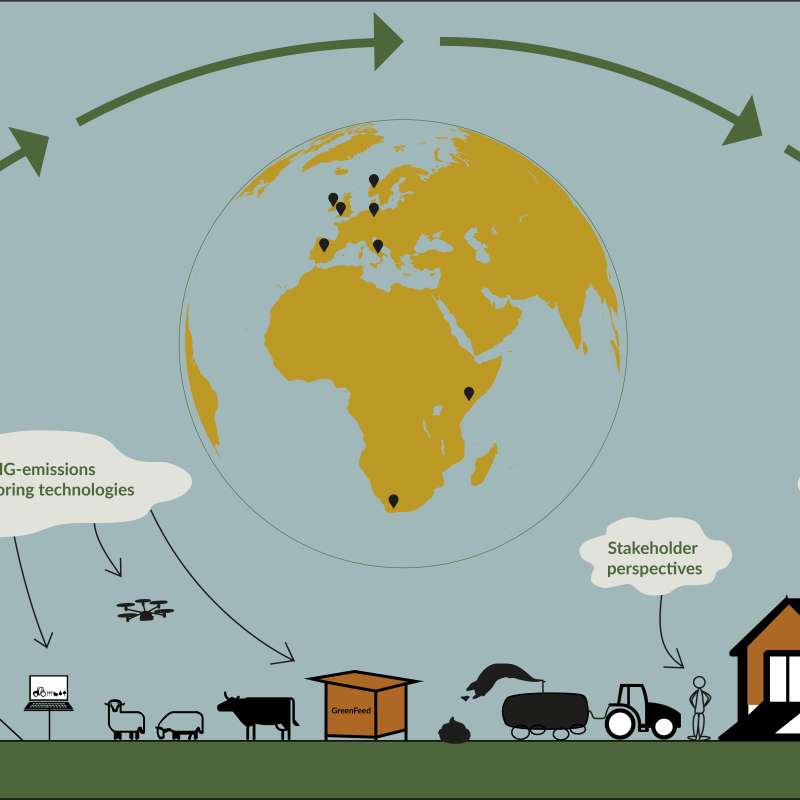Vibeke Lind
Senior Research Scientist
Biography
I have a livestock background and work on feed intake, feeding and grazing strategies for sheep. I did my doctorate on meat quality in lambs that are finished on different types of pasture or on forage. I work primarily towards greenhouse gases from ruminants and at Tjøtta we have built up an approved animal testing department for sheep. We have the option of individual feeding of up to 24 animals. We have 6 respiratory chambers for measuring enteric methane production from sheep and 6 metabolism boxes for measuring feed utilization in sheep. Lastly, we have 9 castrated rams. Otherwise we get access to animals from Tjøtta farm.
Authors
Alexander N. Hristov André Bannink M Battelli Alejandro Belanche M.C. Cajarville Sanz G Fernandez-Turren F Garcia Arjan Jonker D.A. Kenny Vibeke Lind S.J. Meale D Meo Zilio Camila Muñoz David Pacheco Nico Peiren Mohammad Ramin L Rapetti Angela Schwarm Sokratis Stergiadis Katerina Theodoridou E.M. Ungerfeld S van Gastelen D.R. Yanez-Ruiz S.M. Waters Peter LundAbstract
No abstract has been registered
Authors
Alouette van Hove Kristoffer Aalstad Vibeke Lind Claudia Arndt Vincent Odongo Rodolfo Ceriani Francesco Fava John Hulth Norbert PirkAbstract
Considerable uncertainties and unknowns remain in the regional mapping of methane sources, especially in the extensive agricultural areas of Africa. To address this issue, we developed an observing system that estimates methane emission rates by assimilating drone and flux tower observations into an atmospheric dispersion model. We used our novel Bayesian inference approach to estimate emissions from various ruminant livestock species in Kenya, including diverse herds of cattle, goats, and sheep, as well as camels, for which methane emission estimates are particularly sparse. Our Bayesian estimates aligned with Tier 2 emission values of the Intergovernmental Panel on Climate Change. In addition, we observed the hypothesized increase in methane emissions after feeding. Our findings suggest that the Bayesian inference method is more robust under non-stationary wind conditions compared to a conventional mass balance approach using drone observations. Furthermore, the Bayesian inference method performed better in quantifying emissions from weaker sources, estimating methane emission rates as low as 100 g h−1. We found a ± 50 % uncertainty in emission rate estimates for these weaker sources, such as sheep and goat herds, which reduced to ± 12 % for stronger sources, like cattle herds emitting 1000–1500 g h−1. Finally, we showed that radiance anomalies identified in hyperspectral satellite data can inform the planning of flight paths for targeted drone missions in areas where source locations are unknown, as these anomalies may serve as indicators of potential methane sources. These promising results demonstrate the efficacy of the Bayesian inference method for source term estimation. Future applications of drone-based Bayesian inference could extend to estimating methane emissions in Africa and other regions from various sources with complex spatiotemporal emission patterns, such as wetlands, landfills, and wastewater disposal sites. The Bayesian observing system could thereby contribute to the improvement of emission inventories and verification of other emission estimation methods.
Abstract
No abstract has been registered

